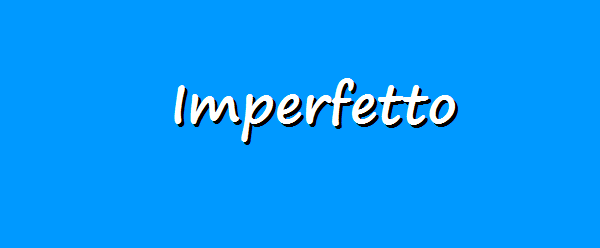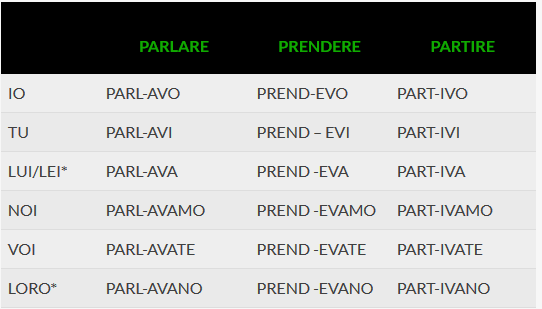The imperfect tense is one of the two most used forms of past tense in Italian, together with the present perfect. Many students of Italian have some trouble understanding when to use the imperfect, and when to use the present perfect. We will explain in a simple and clear way how to do that. Let’s start with the imperfect.

What is the imperfect tense?
It is past tense in the indicative mood, used to express a continued and prolonged action of the past.
How is the imperfect formed?
A good news for you: most verbs have a regular form for the imperfect tense! In the table that follows you can see the imperfect of the three conjugations.
 As you may have noticed by looking at the table above, the three conjugations work in a very similar way for what concerns the imperfect. The ony difference is one letter, the typical one for every conjugation:
As you may have noticed by looking at the table above, the three conjugations work in a very similar way for what concerns the imperfect. The ony difference is one letter, the typical one for every conjugation:
- Verbs ending in -are have an A in the part of the verb which changes. Ex: io parl + A + vo
- Verbs ending in -ere have an E. Ex: io prend + E + vo
- Verbs ending in -ire have an I. Ex: io part + I + vo
In the table that follows you can see four important verbs that have an irregular imperfect tense:

When is the imperfect used?
We use the imperfect:
- for physical descriptions of a situation, an event, a place or a person;
- for psychological descriptions, when talking about feelings and emotions
- to talk about a habit, something that used to happen regularly
- after the word “mentre”
- to talk about continuous actions, not limited in time or not concluded
- to describe a dream
Examples:

Very often in Italian we use the imperfect tense even when other verbal forms would be considered more correct. A few examples:
- We use the imperfect instead of the present indicative, or of the conditional, in order to make a request sound less imperative:

- We use the imperfect instead of other more correct verbal forms to express an unrealizable hypotheses:

Now read this page dedicated to the present perfect, the other verbal form very used in Italian when talking about the past.
There is also a page on when to use the imperfect and when to use the present perfect.
Exercises on the imperfect
Exercises on the present perfect
A text: Rino Gaetano
A song: Gianna